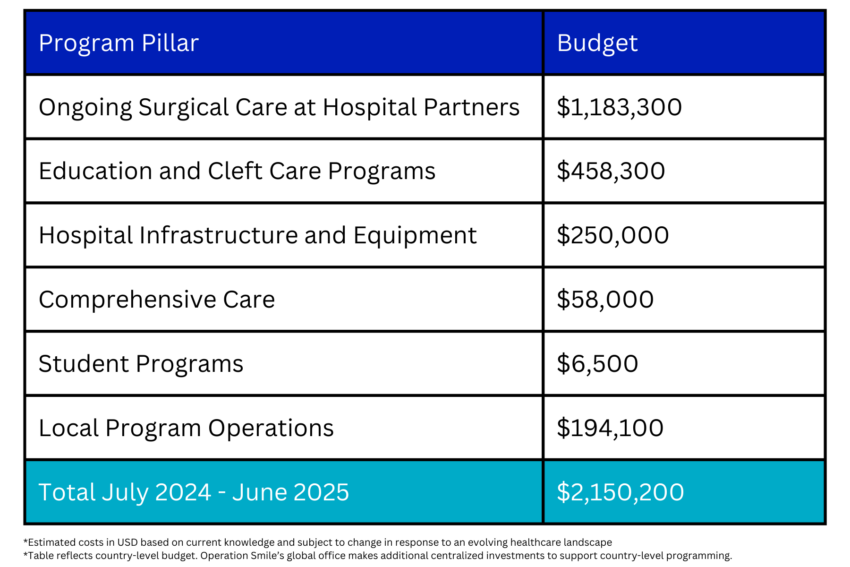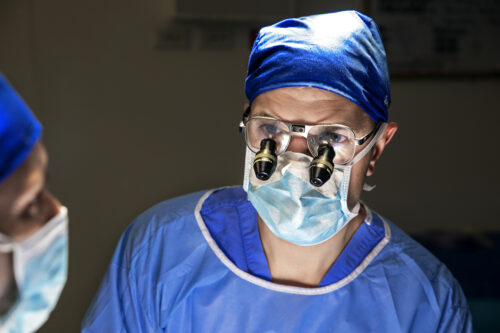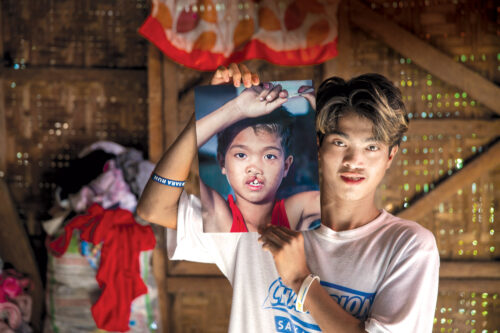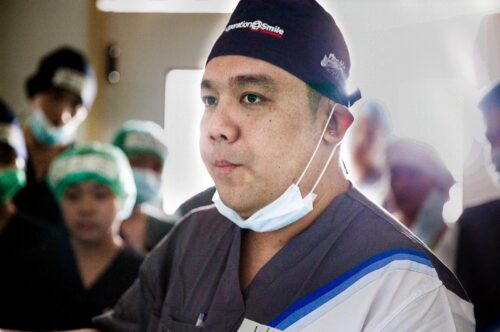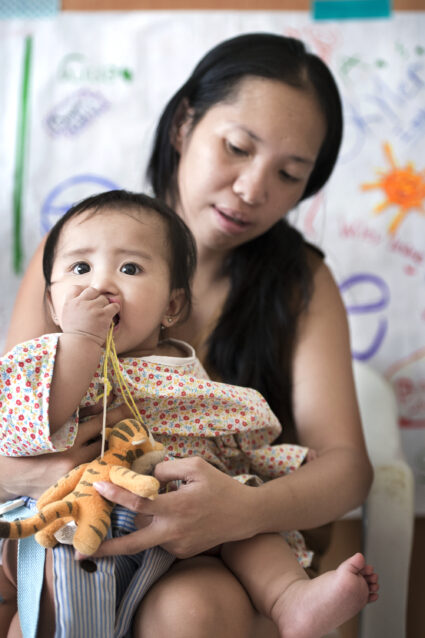
15 years earlier, Lynn-Anne underwent cleft surgery at an Operation Smile surgical program.
“I knew Operation Smile could help her like they helped me,” she said. “Operation Smile gave me a chance to live and be happy.”
In 1982, Dr. William (Bill) P. Magee, Jr., a plastic surgeon, and his wife, Kathleen (Kathy), a nurse and clinical social worker, traveled to the Philippines with a team of medical providers to repair children’s cleft lips and cleft palates. Around 300 families arrived hoping to receive treatment for the children, but the team could provide surgical care for only 40 children. To help more children living with cleft conditions, Bill and Kathy founded Operation Smile.
Over the past 40 years, Operation Smile has provided around 45,000 patients with clinical care in the Philippines.
THE NEED
One in 500 children are born with a cleft condition. In the Philippines, for every 500 births, one baby is born with a cleft condition.
Financial burden. Out of pocket expenses often prevent families from accessing necessary treatment. 17% of the population is at risk of impoverishing expenditure for surgical care, while 25% faces catastrophic expenditure when reaching surgical care.
Shortfall of health workers. Outside of densely populated areas, the country faces a shortage of medical providers. A study found that physicians, professional nurses and midwives are more likely to work in areas where salaries are higher and near communities where they were trained, which leaves around 75% of cities and municipalities in the country with an insufficient number of health workers.
The Philippines has 10 specialist surgical workers per 100,000 people, falling short of the minimum target set by the Lancet Commission on Global Surgery of 20 providers per 100,000 people.
Absence of cleft policy. The absence of a cleft registry or national plan to increase access to care creates barriers to reaching patients across the country’s 2,000 inhabited islands.
OUR FORMULA FOR TRANSFORMATION
Operation Smile’s formula for transformational impact combines care delivery & capacity-building.
Education programs are at the center of Operation Smile’s strategy to increase access to surgery closer to the patient’s home.
Each surgical program brings together providers from all over the world for a unique opportunity to share knowledge and innovate. This type of bi-directional learning is essential to redistributing knowledge between providers and building capacity in the areas of greatest need.
Our work in health infrastructure & equipment addresses structural barriers to care and helps build robust health systems. Operation Smile’s research & innovation efforts inform all aspects of our decision-making and allow us to have a comprehensive understanding of the impact our programs have on patients.
HUB & SPOKES
To ensure that every child has access to care close to home, we equip the providers within our patients’ communities with skills and resources to deliver high quality care. We build the needed capacity by harnessing the talent and resources that exist within the country, usually in the bigger cities, the hubs, to train providers in under-resourced areas, the spokes, where most patients lack access to care.
Operation Smile’s hubs in Cebu, Manila, Pampanga, Santa Ana and Davao provide year-round cleft care for our patients. Our new Center of Excellence in Cebu serves as a foundation for medical education, functioning as a training facility for cleft care specialties. This Center aims to build sustainable cleft surgical teams in spoke hospitals across the Visayas.
Operation Smile’s spoke is based in Bacolod.
In the next five years, OS Philippines plans to expand its system of hubs and spokes across the country.


During Fiscal Year July 2024-June 2025, Operation Smile Canada has committed to invest $68,874 CAD, accounting for 1% of Philippines’s total projected budget for the fiscal year, which will directly contribute to providing high-quality surgery and care for 4,150 patients and deliver training to approximately 620 medical providers.
Cleft Care Programs
Over the course of the year, Operation Smile aims to deliver safe surgical care to around 4,150 patients. We also provide consultations in nutrition (~710 patients), dentistry (~4,780 patients), pediatrics (~1,090 patients) and speech therapy (~730 patients). Operation Smile’s local Student Clubs will support our efforts to recruit more patients in need of cleft care.
Education & Training
This year, our objective is to provide training and education for around 620 health workers. With half of our volunteer base located in Manila, Operation Smile will focus on training surgical teams in Cebu, Norther, Pampanga, Isabela and Visayas. Additionally, a residency program for over 20 surgeons will be launched with the Philippine Association of Plastic, Reconstructive and Aesthetic Surgeons (PAPRAS) and Cebu Doctor’s University.
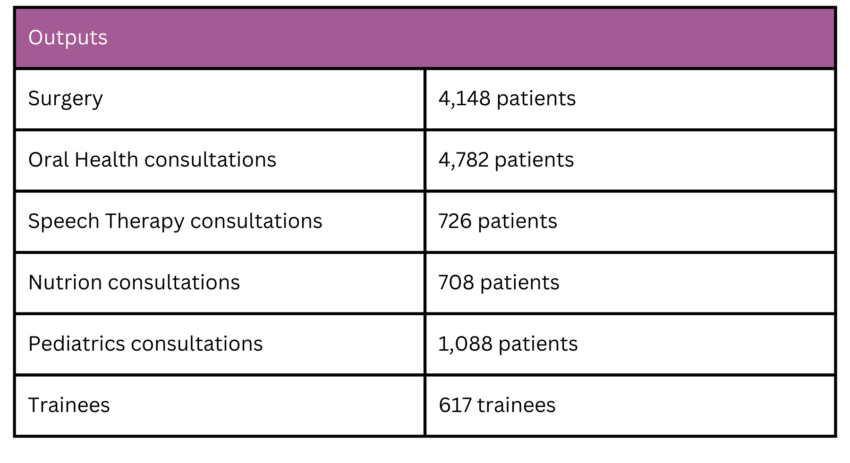 FIVE-YEAR VISION
FIVE-YEAR VISION
Over the next five years, patients in the Philippines will have access to year-round comprehensive cleft care in 12 of the 17 regions of the country, thanks to the addition of seven new spokes and hospital partnerships.
We will provide surgical care for 14,000 patients and comprehensive cleft care consultations for 22,000 patients.
We will raise awareness about Operation Smile’s programs by providing cleft resources and training to community health workers, which are the closest point of contact in the health system for patients and the community.




